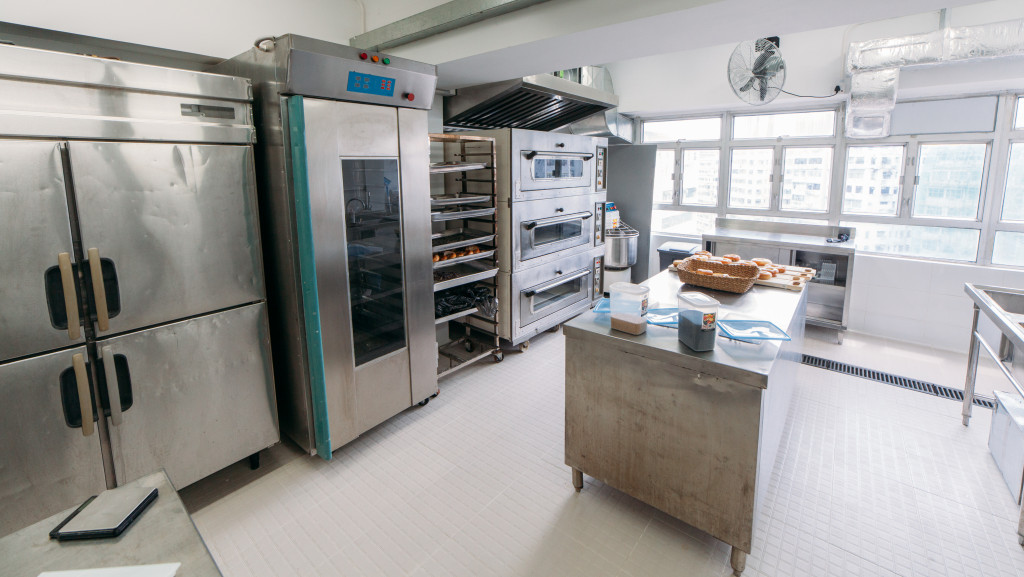We would all probably agree that the COVID-19 pandemic is a bad time to run a restaurant. With safety protocols in place, restaurant owners have to shut down their businesses temporarily to curb the spread of the virus. The suspension of their operations led to the loss of a considerable amount of sales, preventing owners to pay full rent and retain employees.
Despite the surge of business closures, many took the risk to invest in a restaurant business franchise. Others expanded their outdoor dining areas, accommodate patrons less than the normal capacity, and strengthen health and safety practices. Meanwhile, those who aren’t lucky to sustain the overhead expenses of a restaurant turn to low-risk business models.
With the current challenges of physical reality, food entrepreneurs rely on ghost kitchens, a search-optimized and data-driven restaurant. Many believe that ghost kitchens are the future of restaurants and will continue to catapult post-pandemic. To know more about this new restaurant model, here’s what to know about ghost kitchens.
What are ghost kitchens?
Ghost kitchens are basically a food business minus the tables, chairs, order counter, hanging menus, and self-service stations. Simply put, a ghost kitchen is a food prep operation with no public presence and operates on a delivery-only basis via an online platform or food delivery application. The operator only has a physical space designed for the kitchen, where a delivery rider picks up the order and customers consume the food off-premises.
Ghost kitchens serve as a lifeline for restaurant owners who can’t hire employees, pay rent, and cover overhead costs involved in running a full capacity restaurant. Without a physical dining space, ghost kitchens heavily rely on third-party delivery apps to reach customers. This led to other terms such as virtual kitchen, cloud kitchen, shadow kitchen, and dark kitchen, to name a few.
There are two major forms of ghost kitchens: rented commissary and secret back-of-house. In a rented commissary, the operator rents from a shared kitchen space along with other delivery-only restaurants. You can find them in urban metros, office parks, and tenant-less malls. Meanwhile, a secret back-of-house ghost kitchen operates within its existing location and runs in a delivery-only concept.
Business opportunities

Ghost kitchens are known for their flexible model, making them suitable for various forms of food business. This model is particularly popular among budding entrepreneurs and new chefs who want to start small and test their skills and concept within a commercial landscape. It’s never easy to compete with big brands in terms of menu, price, and discounts, so they turn to ghost kitchens to test how they will fair on their new customers.
Small restaurants wanting to expand are also taking advantage of ghost kitchens to avoid the risks of an expensive build-out. This allows them to reach more customers through online delivery, helping them to focus on their flagship stores’ dine-in experience. There are also food truck owners looking to balance delivery orders and physical dining. Operating in a small space can be frustrating both for the kitchen staff and customers. Through kitchens, food truck owners enjoy delivery opportunities without affecting the service quality for their diners.
Established, multi-unit chains are trying out ghost kitchens to respond to the changing customer demands. Even large businesses want to save more on overhead costs and serve customers in high-end neighborhoods. High-profile influencers, content creators, and celebrity chefs are also jumping on the ghost kitchen bandwagon to maximize their fame and brand in the food business.
Lastly, we have campus-specific dining, where corporate and university caterers operate on ghost kitchens to obtain higher delivery demand in the campuses they serve. Serving both dine-in and delivery customers can affect the dining experience, so they turn to ghost kitchens to relieve them of these concerns while boosting their revenue through on-campus delivery.
The benefits of ghost kitchens
Many food entrepreneurs are switching to ghost kitchens because of the many benefits earned and its sustainable business opportunities.
The pandemic has radically transformed the way customers order and consume food. Because of social distancing orders, foot traffic is down while food delivery is booming. Consumers now rely on takeouts to avoid the outdoors and enjoy their favorite food right in their homes.
Starting a restaurant or any form of food establishment is incredibly expensive. According to a survey by Restaurantowner.com the median startup cost is at $375,000, excluding the construction costs, kitchen equipment, and rental space. This means running a full restaurant business would require a fairly huge investment before you can start one. Ghost kitchen resolves this by removing the initial costs, leaving you with kitchen appliances as the only requirement.
Another big benefit of ghost kitchens is their ability to open new, bigger channels via delivery platforms. Customers can reach you anytime or anywhere they like without dropping by at the flagship store. This allows you to focus on the quality of food instead of spending your time, money, and effort from running a physical store.
E-commerce has done a lot for retail businesses, and ghost kitchens are not an exception. While the health crisis made it difficult to run a restaurant, this opened opportunities for entrepreneurs to rethink their business models and adapt to the changing consumer trend. There’s still a long way to go for ghost kitchens, and we can only wait until its next developments.




